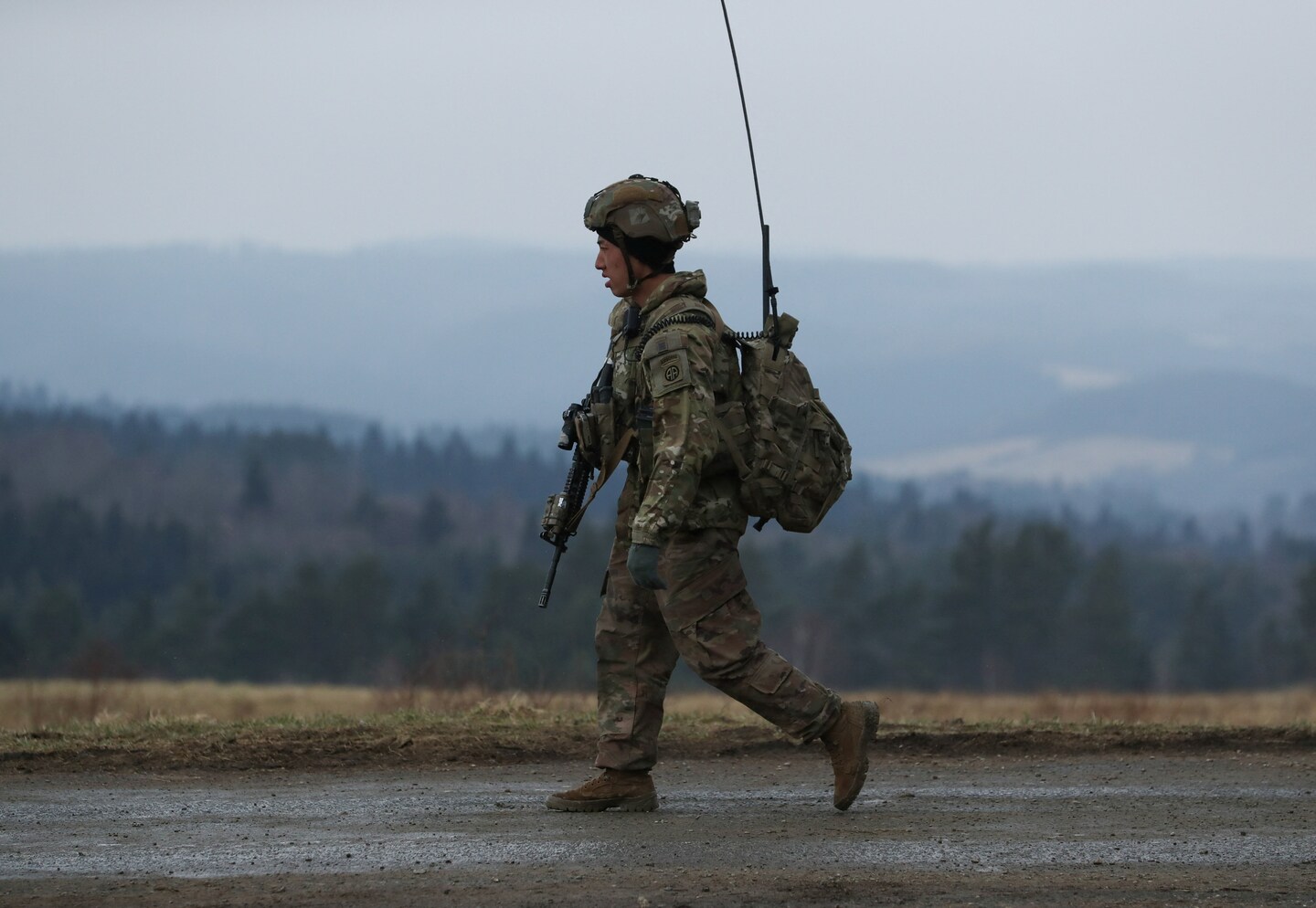The open-ended war in Ukraine has thrown the Pentagon’s long-term planning into question, with senior U.S. defense officials expected to revamp how they deploy military forces in Eastern Europe and the Baltics amid deepening anxiety over Russia’s broader ambitions.
As Ukraine war drags on, Pentagon makes long-term plans for Europe

“I believe a lot of our allies, especially those such as the Baltics or Poland or Romania, they are very willing to establish permanent bases,” Milley said in testimony before the House Armed Services Committee. “They will build them and pay for them.”
In testimony before the same committee last week, Air Force Gen. Tod D. Wolters, who leads U.S. European Command, said that NATO’s existing policy of rotating troops through Eastern Europe “has got to change” and that countries there “are very willing” to take on NATO forces permanently.
The high-level discussions come as Russian forces have been stymied in their quest to seize most major cities in Ukraine, including the capital, Kyiv. As a result, U.S. officials have assessed that Russian President Vladimir Putin is revising his objectives, intent on pouring more combat power into Ukraine’s east.
The Pentagon has drastically increased the number of U.S. troops in Europe, from about 60,000 to more than 100,000, as a result of Russia’s military buildup around Ukraine and subsequent invasion. At the height of the Cold War in the 1950s, the U.S. military presence throughout Europe was more than 400,000.
Senior U.S. defense officials have been circumspect in describing which path they will pursue while defining Russia’s invasion of Ukraine as a generational event that has upended global order. Pentagon spokesman John Kirby said last week that the United States would consult with its allies “at the right time” to decide what the proper security posture in Europe is, “no matter how this war ends,” and that the Biden administration is open to discussing whether there needs to be a “larger permanent presence.”
On Tuesday, Defense Secretary Lloyd Austin said the issue is likely to come up in a NATO summit in June.
“Our goal,” Austin said, “is to make sure that we continue to reassure our allies and partners, especially those that are on the eastern flank and especially our allies that are in the Baltic area, the Baltic region.”
The deliberations are complicated by U.S. assessments that China, not Russia, is the more significant long-term concern for U.S. security.
One senior U.S. defense official, speaking on the condition of anonymity to discuss the Pentagon’s planning, said in an interview that “there will be posture changes in Europe” as a result of the war in Ukraine, and “some of that may include U.S. presence.” But Eastern Europe also will be fortified by troops from other NATO nations that are calculating what will be necessary to deter Russia in the months and years to come, this official said.
“Right now, I think that we’ll be able to walk and chew gum at the same time, and make the Indo-Pacific a priority theater while understanding that we have to … bulk up a bit in Europe,” the official said.
Elbridge Colby, a former defense official in the Trump administration, said that it’s a “really serious concern” what the trend line might be in keeping additional forces in Europe as a result of Russia’s invasion, considering the United States is “doing badly in terms of the military balance in Asia.”
While the Pentagon has relied heavily on the U.S. Army to fortify security in Eastern Europe and would probably rely on the Navy and Air Force in the Pacific, there is more overlap than people realize, Colby said. The 82nd Airborne Division, which has thousands of soldiers deployed to Poland, requires air support and other high-end capabilities that also are needed elsewhere, he said.
“I think frankly that the president has this idea of: ‘We’re America. We can do anything,’” Colby said of President Biden. “But there are very real and immediate constraints. We need to face up to them and adapt, not ignore them.”
The United States is “not quite at the point” where it might decide to establish a new base or bases in Eastern Europe, but the issue is clearly “in the wind,” said Jim Townsend, a former Obama administration official who studies NATO security issues.
After Russia’s 2014 invasion and annexation of Ukraine’s Crimean Peninsula, U.S. defense officials scrutinized whether to permanently base American troops in Eastern Europe, Townsend said. The idea, which came with significant expense, ultimately was tabled, but recent events could change that thinking, he said.
“We’re in a different day and era now,” Townsend said. “I think we need them there.”
While the Pentagon probably does not want to build up U.S. forces in Eastern Europe permanently, given its concerns about China, it will get increasingly difficult to pull them out due to external pressure from allies and internal pressure from advocates who believe a larger U.S. military presence on Europe is required, said Rachel Rizzo, a senior fellow at the Atlantic Council’s Europe Center.
“The pro is that eastern allies would be increasingly reassured,” Rizzo said. “The con is that we could return to a scenario where there are just a massive number of U.S. troops on the European continent again. We’re not there yet, but it’s something to think about.”
Karoun Demirjian and Greg Jaffe contributed to this report.






